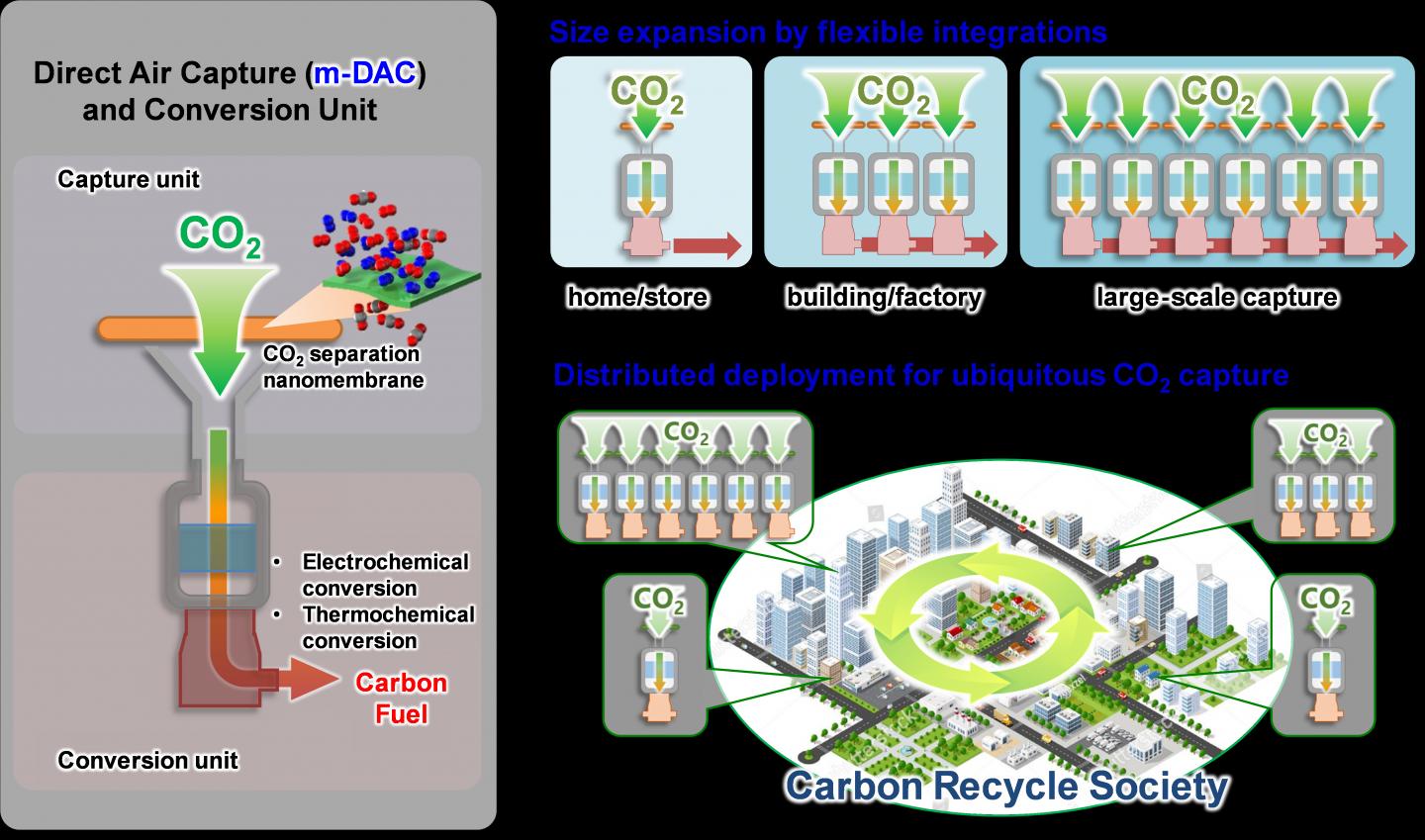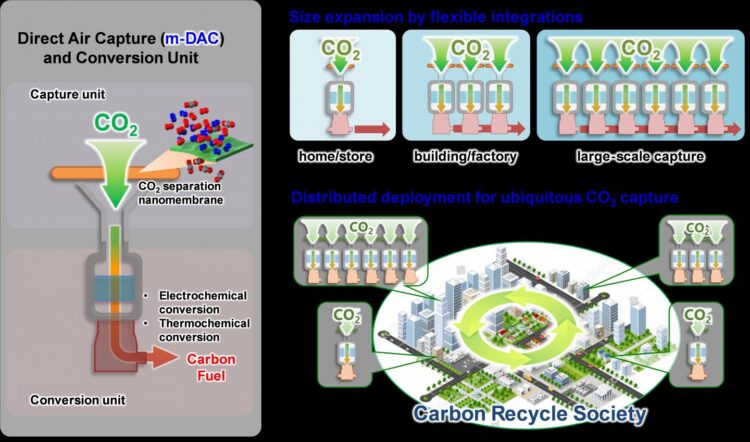Researchers in I2CNER, Kyushu University suggest the potential of the advanced gas separation membranes for CO2 extraction from ambient air

Credit: Kyushu University
Climate change caused by emissions of greenhouse gases into the atmosphere is a most important issue for our society. Acceleration of global warming results in catastrophic heatwaves, wildfires, storms and flooding. The anthropogenic nature of climate change necessitates development of novel technological solutions in order to reverse the current CO2 trajectory.
Direct capture of the carbon dioxide (CO2) from the air (direct air capture, DAC) is one among a variety of negative emission technologies that are expected to keep global warming below 1.5 °C, as recommended by the Intergovernmental Panel for Climate Change (IPCC). Extensive deployment of the DAC technologies is needed to mitigate and remove so-called legacy carbon or historical emissions. Effective reduction of the CO2 content in the atmosphere would be achieved only by extracting huge amounts of CO2 that are comparable to that of the current global emissions. Current DAC technologies are mainly based on sorbent-based systems where CO2 is trapped in the solution or on the surface of the porous solids covered with the compounds with high CO2 affinity. These processes are currently rather expensive, although the cost is expected to go down as the technologies developed and deployed at scale.
The ability of membranes to separate carbon dioxide is well documented and its usefulness is established for industrial processes. Unfortunately, its efficiency is less than satisfactory for the practical operation of the DAC.
In a recent paper, researchers from International Institute for Carbo-Neutral Energy Research (I2CNER), Kyushu University and NanoMembrane Technologies Inc. in Japan discussed the potential of membrane-based DAC (m-DAC), by taking advantage of the state-of-the-art performance of organic polymer membranes. Based on the process simulation, they showed the targeted performance for the m-DAC is achievable with competitive energy expenses. It is shown that a mult-stage application separation process can enable the preconcentration of air CO2 (0.04%) to 40%. This possibility and combination of the membranes with advanced CO2 conversion may lead to realistic means for opening circular CO2 economy.
`Based on this finding, Kyushu University team has initiated a Government-supported Moonshot Research and Development Program (Program Manager: Dr. Shigenori Fujikawa). In this program, direct CO2 capture from the atmosphere by membranes and the subsequent conversiont to valuable materials is the major development target.
###
For more information about this research, see “A New Strategy of Membrane-Based Direct Air Capture” Shigenori Fujikawa, Roman Selyanchyn, and Toyoki Kunitake, Polymer Journal (2020), https:/
Media Contact
Tomoya Koga
[email protected]
Related Journal Article
http://dx.





